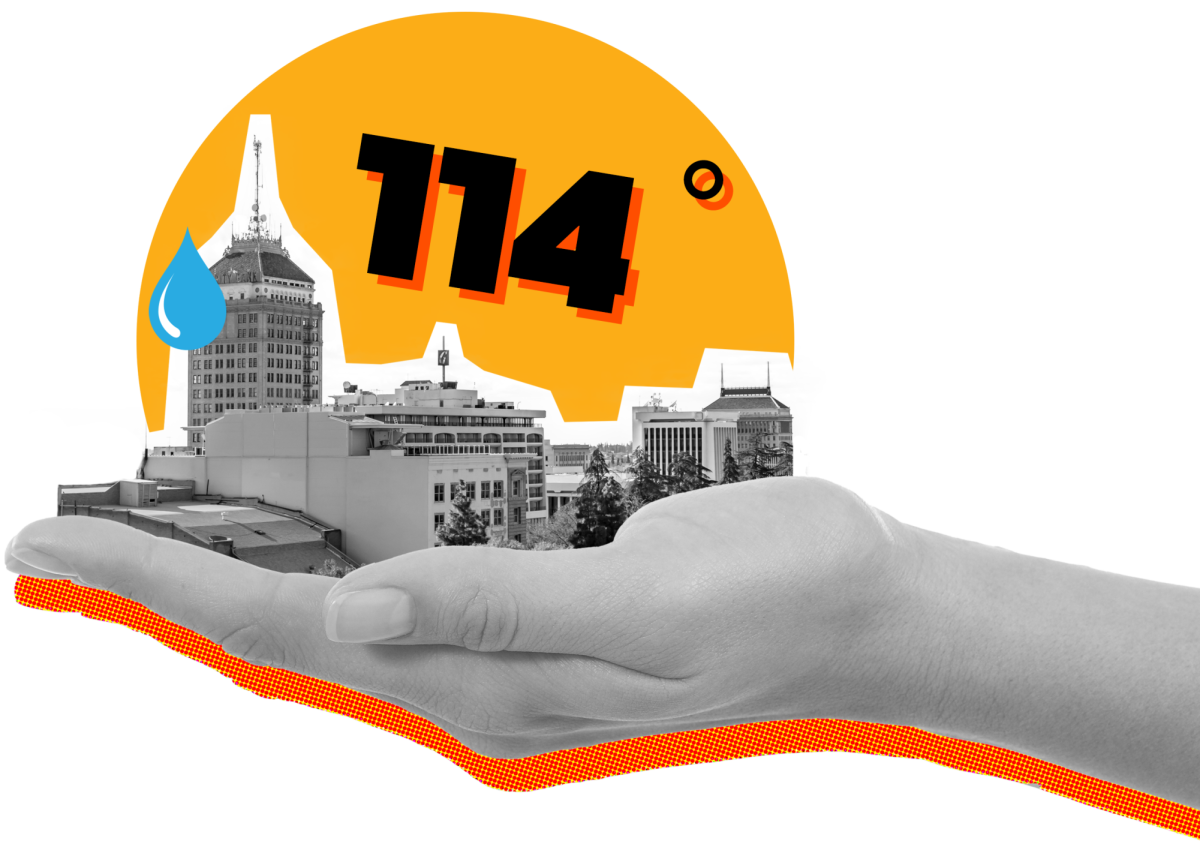This summer, Fresno baked under relentless triple-digit heat with temperatures soaring above 110 degrees for days on end.
Stepping outside felt like walking into an oven beneath the merciless, evil glare of the sun. The heat wrapped around everything—suffocating, inescapable—leaving no refuge, not even in the shade. Indoors, fans struggled against the oppressive wave, offering little more than a slight ripple in the stifling air. The heat grew so overwhelming that it forced several seasonal farmers’ markets to shut down. The sun, high above, still refused to relent.
To top off this molten-hot sundae, PG&E kindly alerted us that our bills would be going up, a record high after four rate hikes approved by the California Public Utilities Commission in 2024. The utility company’s REACH program, aimed at helping customers with overdue bills, closed to new applications at the end of August due to funding shortages.

The city experienced record-breaking heat this summer, as it has in many previous summers, with July 2024 going down as the warmest month since record keeping began in 1887, according to the National Weather Service. The city reached an average temperature of 90 F, surpassing the previous record of 88.7 F set in July 2021. A high of 114 F on a single day in July also tied for the second-highest temperature in Fresno’s history, just shy of the record of 115 F set in 1905.
Average triple-digit days have continued to rise, reflecting a clear warming trend over the past 77 years, Antoinette Serrato, a meteorologist for the National Weather Service in Hanford, told Fresnoland. Serrato attributed the intensifying heat to climate change, noting that Fresno has already experienced 60 days of triple-digit temperatures this year. In 2021, Fresno set a record with 69 days at or above 100 degrees, a mark that could soon be surpassed.
Even in late September, temperatures reached and lingered into the 90s, well above the historical average for this time of year. Two maximum temperature records have already been broken in October: 102 degrees on Wednesday and 105 degrees on Thursday during the first week. True relief from the intense summer heat may not come until the leaves have fully changed color and everyone is sipping pumpkin spice lattes.
A panel of climate scientists reported it is “virtually certain” that heatwaves are becoming more frequent and severe. CalMatters identified California communities most at risk, including the Central Valley cities of Visalia, Fresno, Clovis and Tulare.
Fresno is no stranger to scorching summer heat, but the city seemed unprepared for just how prolonged these extreme conditions have become. You don’t need to be a scientist to realize this is the hottest summer so far and it’s only going to get worse.
As the heat continued to reach scorching levels, it wasn’t just residents who suffered—Fresno State’s students and faculty wilted in classrooms. The Collegian reported unbearable classroom temperatures, with some classes even moving online.
These issues are linked to Fresno State’s Central Utility Plant Replacement Project, the largest Public-Private Partnership Utility Infrastructure Project in the California State University (CSU) network, designed to modernize and maintain the university’s central utility infrastructure. The project mandates that cooling temperatures be set no lower than 78 F.
It is a standard benchmark— Occupational Safety and Health Administration (OSHA) recommends an indoor temperature range between 68 F and 78 F to ensure a comfortable working environment for employees, but temperature and heat index measurements offer generalized data and may not account for factors such as humidity, ventilation or the specific layout of a space.
Simply opening a window or turning on a loud fan may not be sufficient to cool down a stifling classroom, especially if the air outside is stagnant or warmer than the inside. The prolonged heat exposure leaves students drained, hindering their focus, retention and class participation.
Make no mistake, Fresno State has made great strides in energy efficiency, but additional steps are needed to improve air circulation and cooling during peak heat months. Installing portable air conditioning units or upgrading to energy-efficient windows, particularly in older buildings that trap heat, would be excellent additions to the measures already in place. Even adding ceiling fans could help.
While this is undoubtedly easier said than done, expecting professors and students to simply muscle through as summers get hotter and longer is an ill-conceived approach for both health and productivity. Inaction will ultimately cost more in terms of health, morale and educational outcomes.
If trends continue, triple-digit heat in November is not far off, and failing to act now means facing a future where these disruptions become the norm, rather than the exception. Very soon, adapting to a hotter earth will no longer be optional. Fresno State must continue building on its current initiatives and also explore straightforward solutions to keep students and professors from melting in their seats.




